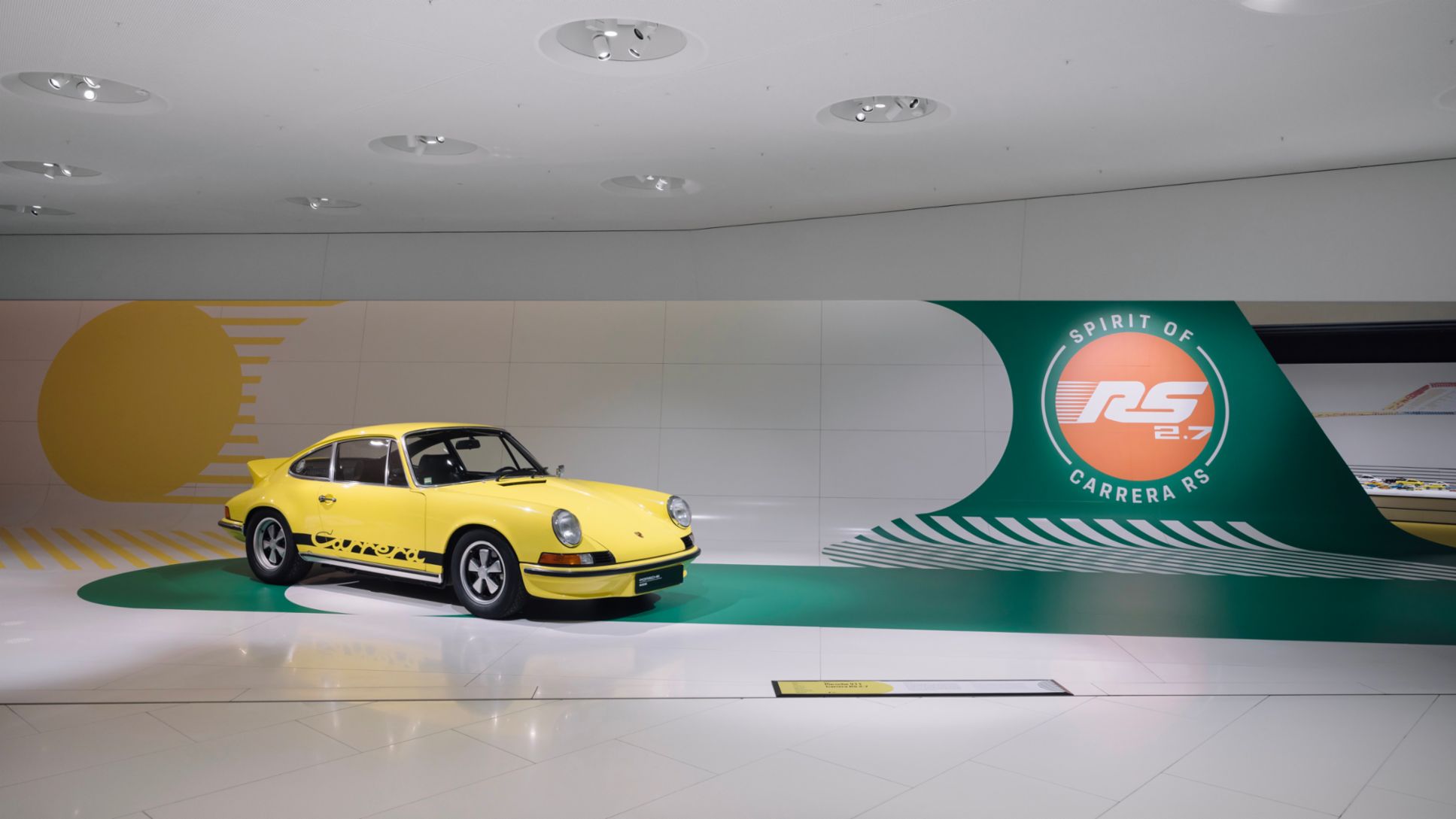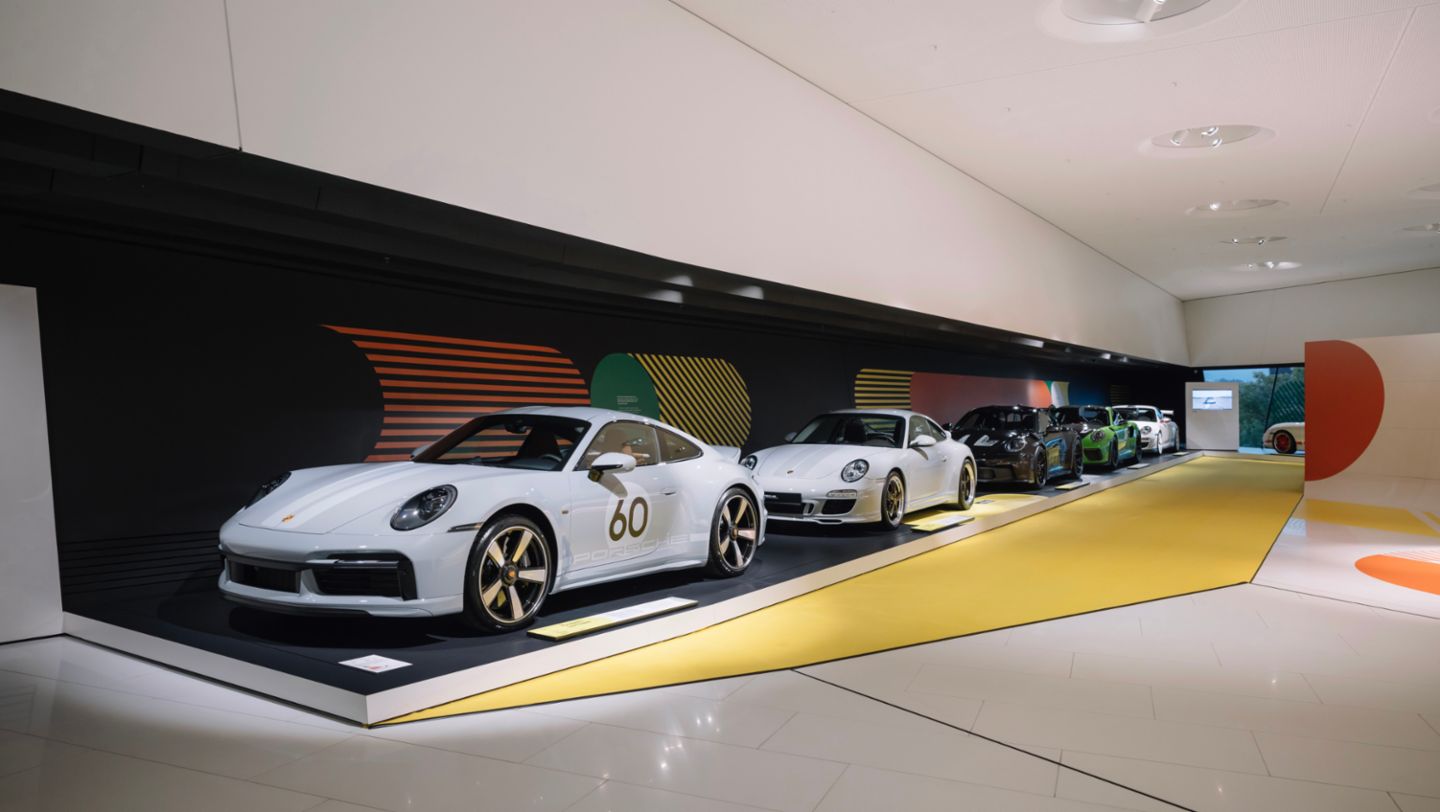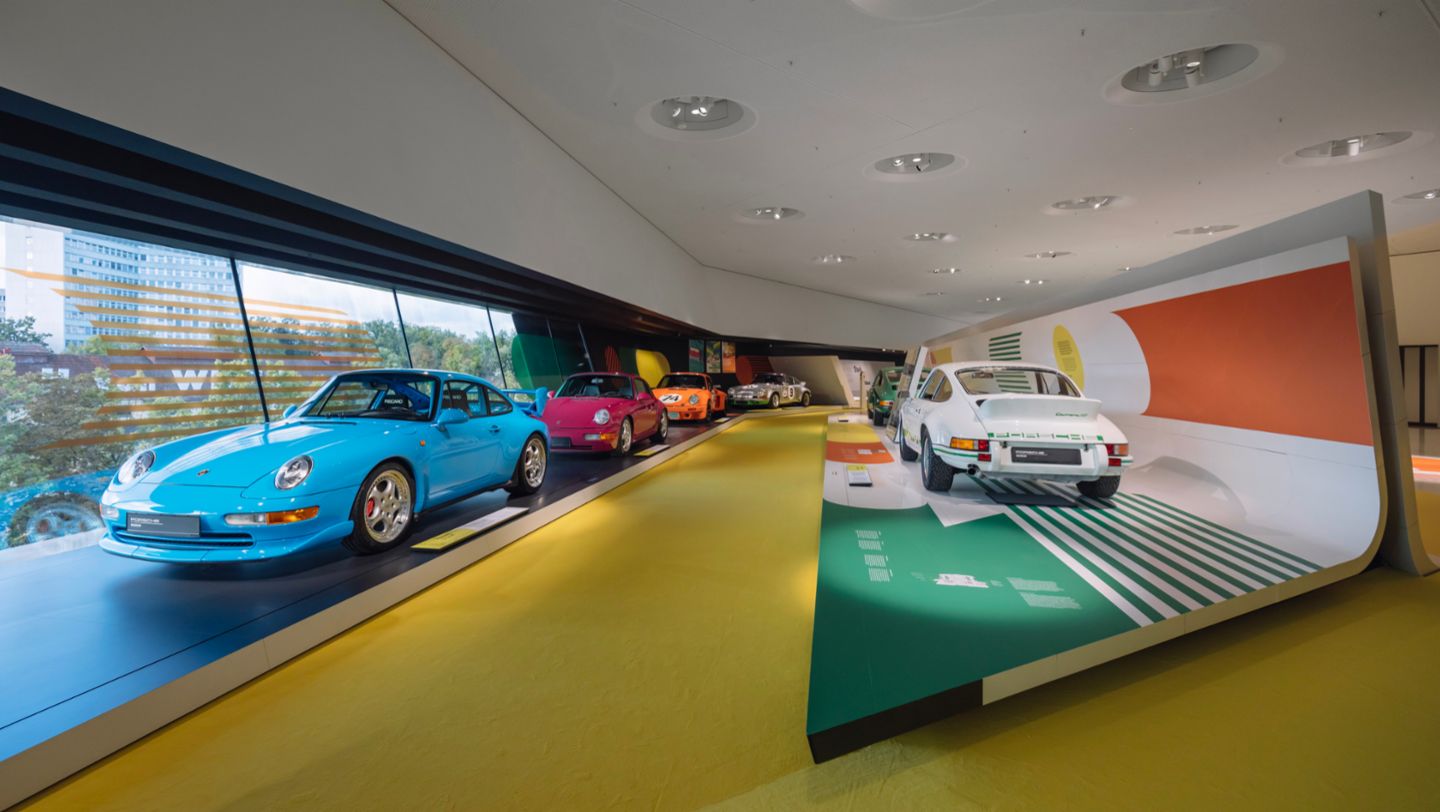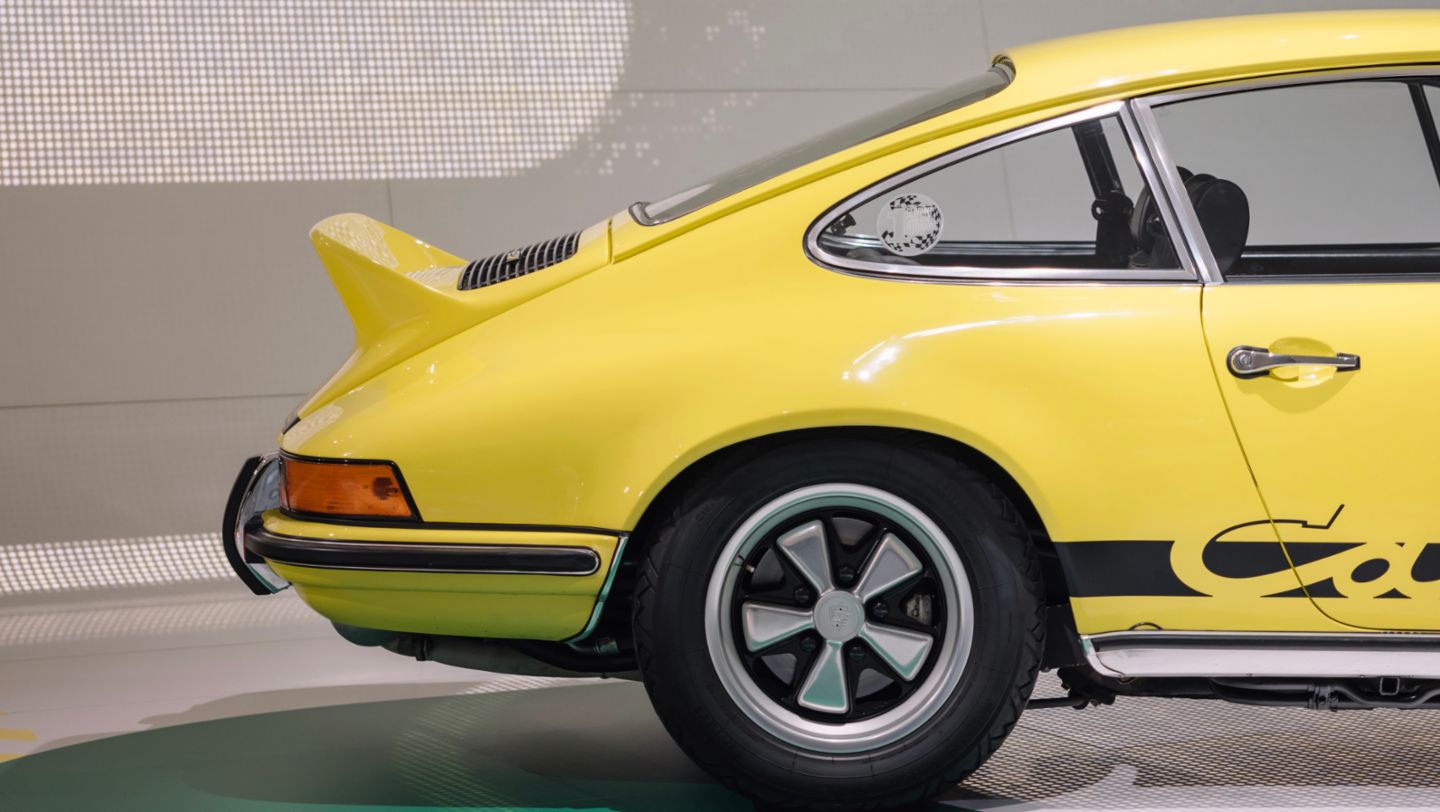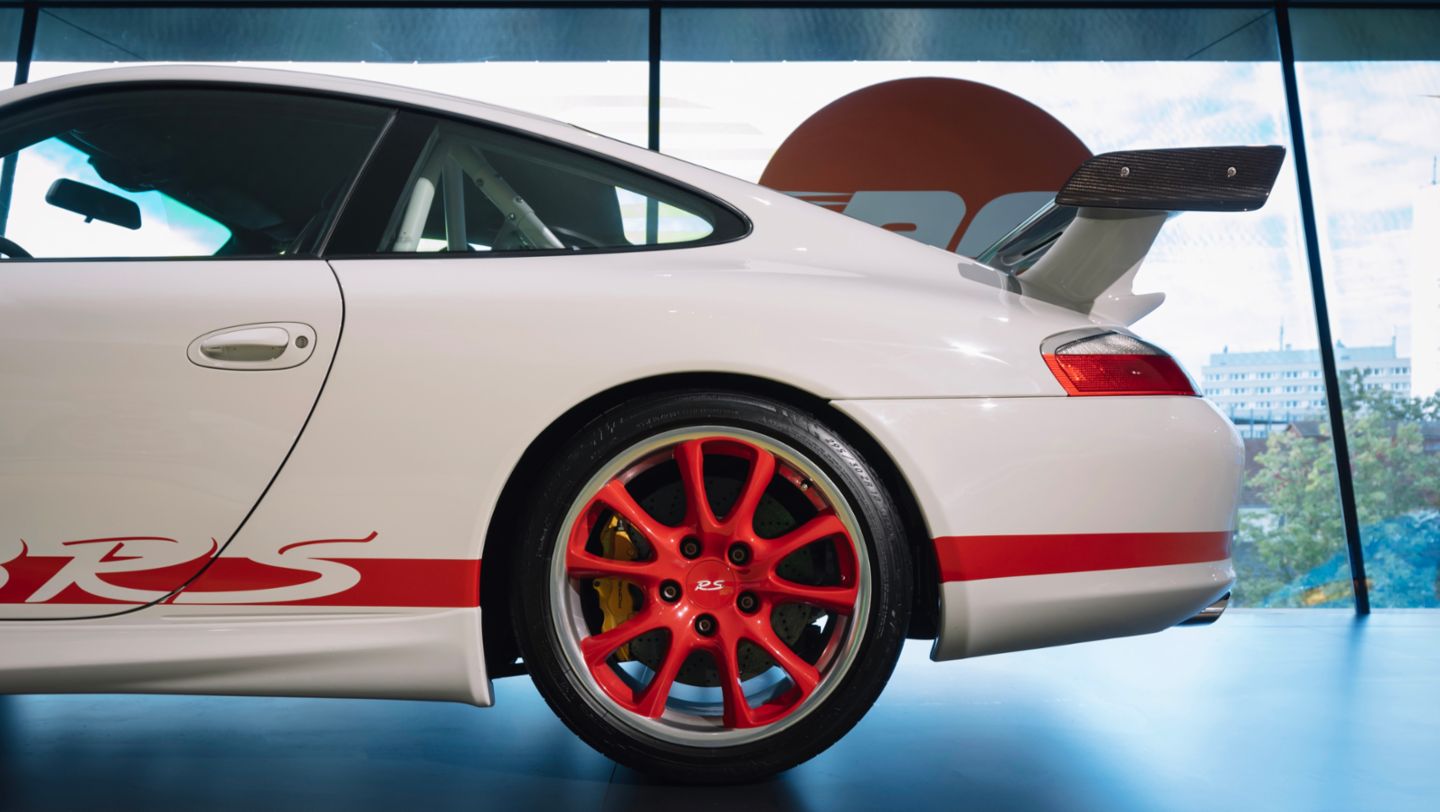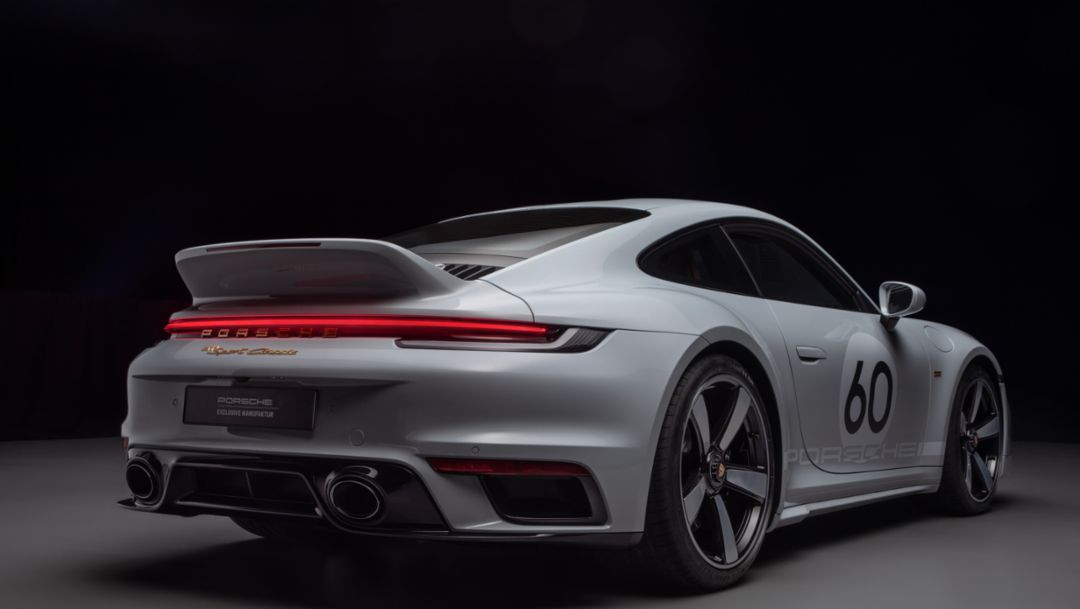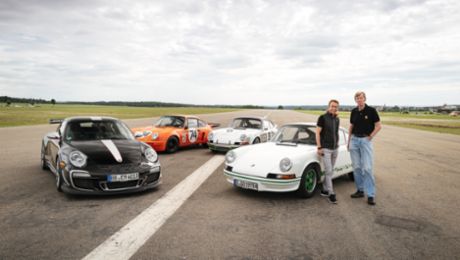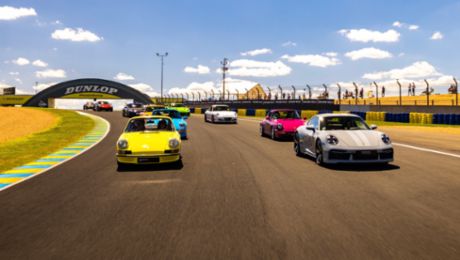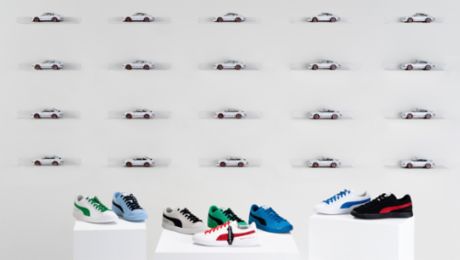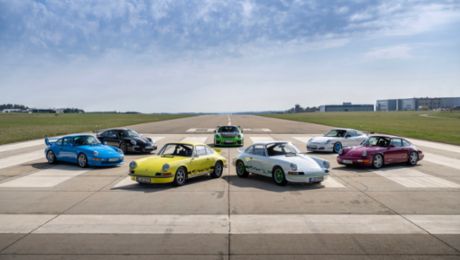When the RS was unveiled at the Paris Motor Show on 5 October 1972, it was the first series-production car in the world with front and rear spoilers. The requirements for the 911 base vehicle for racing and rallying were clearly defined: light and fast were the watchwords. To achieve the objectives, Hans Mezger and Valentin Schäffer developed the 2.7-litre six-cylinder boxer engine with fuel injection from the ground up.
In the Sport version, the 210-PS, 960-kilogram Coupé went from 0 to 100 km/h in 5.8 seconds and topped out at almost 245 km/h. The precise aerodynamics designed back then with racing cars in mind still make the RS unique today. “It’s the most direct technology transfer from motorsport to series production that ever occurred,” says Head of GT Vehicles Andreas Preuninger. “Nothing about this has changed to this day and it is part of a modelled tradition at Porsche.”
The Porsche Museum tells the story of the RS and its racing cousin, the RSR, not only through the cars and anecdotes, but also with films, photos, racing posters and interactive features. Visitors can, for example, put together their own custom RS by turning the model-detail and colour wheel of a kaleidoscope. To fulfil as many personal wishes as possible, Porsche held fast to its customisation principle with the Carrera RS 2.7. Buyers could choose from a wide array of colours and equipment options. The strong demand took the sports car manufacturer by surprise – it had initially planned just 500 series-produced cars for homologation.
from the development vehicle to the production-ready Porsche
At the centre of the special exhibition is a bright yellow 911 Carrera RS 2.7 in Touring spec, as well as a rare metallic green prototype. The cars, development documents, advertising brochures, price lists, the Carrera logo and an article from the Porsche magazine Christophorus describe the path from the development vehicle to the production-ready Porsche.
Visitors can also look forward to seeing other extraordinary cars from the family lineage of the ducktail, spanning five decades of Porsche history. With the duo of the 964 and 993 generations of the 911 RS, Porsche expanded the RS family to include air-cooled sports cars. The water-cooled era is represented by the 996, 997 and 991 generations of the 911 GT3 RS and the 992-generation 911 Sport Classic models, the last of which is a collector’s edition from the Heritage Design Series from Porsche Exclusive Manufaktur and features a fixed rear spoiler.
The car’s ‘ducktail’ moniker from the realm of avian anatomy was inspired by the shape of the rear spoiler. At high speeds, it presses the 911 to the ground and thereby reduces lift to achieve the ideal balance and enable higher top speeds. Half a century ago, with the RS, the sports car manufacturer achieved the perfect synthesis between weight, power, aerodynamics and driving dynamics. It was light, fast, race-ready and road-approved.
Info
The Porsche Museum is open Tuesday to Sunday, from 09:00 to 18:00. The current health and hygiene regulations can be found on the website: www.porsche.com/germany/aboutporsche/porschemuseum
For more information about the history of the car, as well as film and photo material, feel free to visit the online portal dedicated to the 911 Carrera RS.
